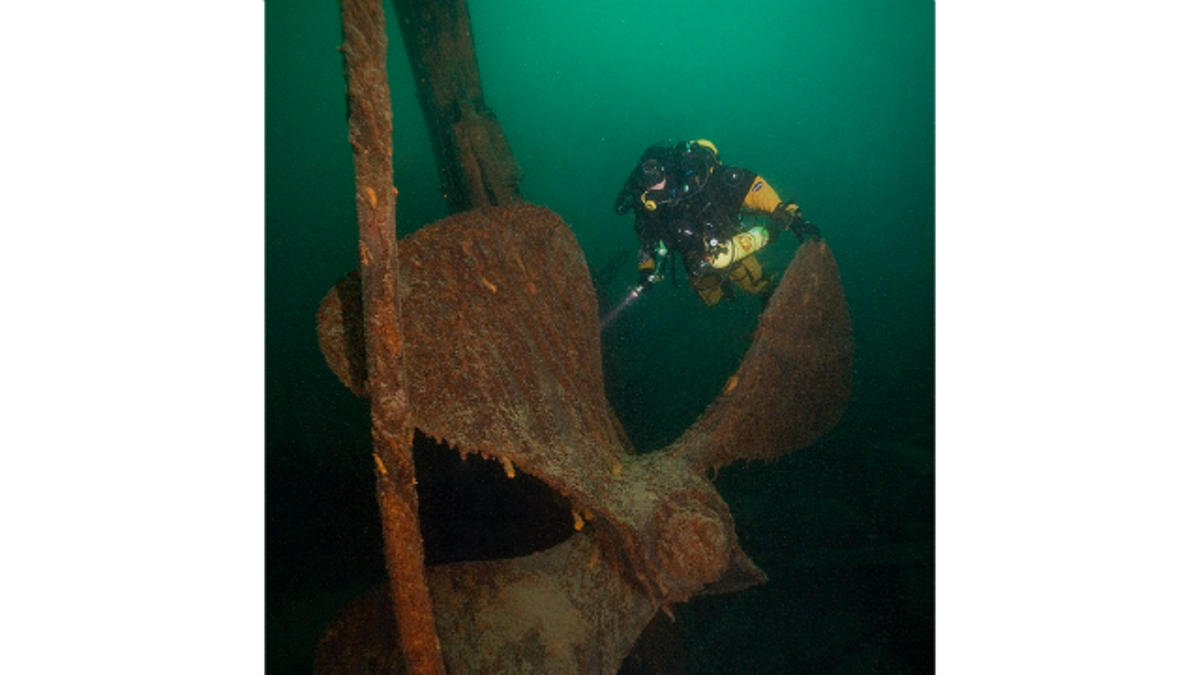The national parks still have hidden places—a few million acres of geological gems, stunning wildlife and historical artifacts unknown to most because they lie not on land but underwater.
The Submerged Resources Center, a small team of archaeologists and photographers, is tasked with exploring the parks' watery depths. It grew out of the National Reservoir Inundation Study, which investigated the impact of dams and reservoirs on historic and natural sites between 1976 and 1980. The dive team now helps bring the parks' submerged treasures into public view. "We have the same purpose as the other National Park Service offices," to protect natural and cultural resources, says Dave Conlin, the SRC's chief. "We're just underwater to do it."
Slideshow: Underwater in America's National Parks
It's an enviable beat: One assignment took the team to the warm, crystalline waters of Florida's Dry Tortugas National Park to record 17th century cannons and anchors amid the marine graveyard of some 200 ships. Another had them kicking holes through trash in the icy Hudson River, exploring the Ellis Island ferry, which transported newly arrived immigrants to the U.S. mainland and sank in its slip a few years after being decommissioned. In 1989, decades after the U.S. military tested nuclear bombs at Bikini Atoll in the Pacific Ocean, the team conducted the first systematic underwater radiation analysis of the area. Only afterward was the area designated as safe for recreational divers.
Divers also explore the Interior West's lakes, recording their history and geology and working on vexing conservation problems. In Yellowstone National Park in the mid-'90s, as introduced lake trout began outcompeting native trout, divers helped managers locate the exotic fish's spawning grounds, inventorying boat wrecks and hydrothermal spires in the process. In 2002, after a private diver discovered a B-29 Superfortress bomber that crashed in Lake Mead in 1948, the team studied it over a two-year period before opening the site to guided dives. In 2004, they helped rangers at Olympic National Park in Washington solve the 1929 disappearance of Blanche and Russell Warren, recovering remains from a 1927 Chevy 170 feet below the surface of Lake Crescent. This past November, the team traveled to American Samoa to help local rangers combat a starfish invasion that threatened to destroy the park's reef, while also training on high-tech "rebreather" gear.
Diving must become second nature for the crew to map and photograph underwater resources. "What we do is specialized. It requires a lot of education," says Brett Seymour, deputy chief and lead photographer. Using the best equipment, like rebreathers, allows crew members to dive safely in diverse environments. And there's a side benefit: The rebreathers are nearly silent. Where before the sound of his own breathing masked the ocean's noises, now Seymour hears the crackling of shrimp, and if he's lucky, the songs of humpback whales.
1. National Park of American Samoa

(Brett Seymour, NPS Submerged Resources Center)
The vibrant reef lies just inches below the surface at Ofu Beach, American Samoa.
2. Yellowstone National Park

(Brett Seymour, NPS Submerged Resources Center.)
An NPS Diver examines dormant geothermal spires in Yellowstone Lake believed by geologists to be 11-13,000 years old.
3. American Memorial Park, Saipan

(Louis Lamar, Woods Hole Oceanographic Institution.)
NPS Photographer Brett Seymour films a Japanese Aichi E13A WWII torpedo bomber, also know as a “Jake”, in Tanapag Lagoon, Saipan.
4. Isle Royale National Park

(Brett Seymour, NPS Submerged Resources Center)
NPS Archeologist Dave Conlin explores the prop of the SS Henry Chisholm resting at 145’ in the frigid waters of Lake Superior.
Check out more amazing underwater photos.
More from The Active Times
The Most Amazing Scuba Dives on the Planet
The World’s Most Thrilling Cliff Diving Spots
